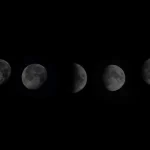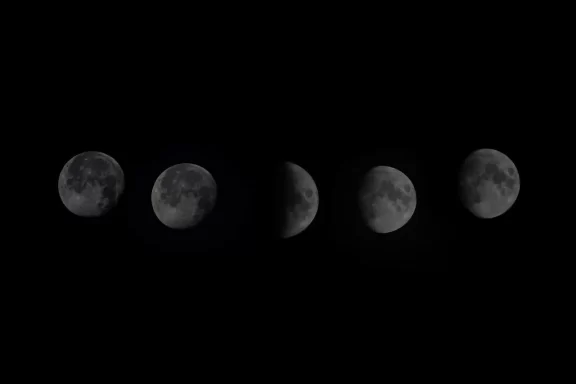Valentine’s Day is the one day in the year dedicated to celebrating love and affection. Its origins go beyond the simple exchange of roses and chocolates and it has a history that stretches across centuries of cultural evolution. From ancient pagan traditions to the wallet-emptying affair it is today, read on as we cover how it was invented.
The Original Valentine’s Day
The Festival of Lupercalia
The 14th of February, or any day close to it if you use calendars besides the Gregorian one, had nothing to do with love in ancient times. It was only until the festival of Lupercalia, which many believe to the inspiration for Valentine’s day, that we can draw some parallels between a love-theme and a celebration, partly because Lupercalia was held annually on the 15th of February. The festival was a celebration of fertility which honoured the mythical Roman founders Romulus and Remus and also Faunus, the god of agriculture, even though the festivities included sketchy activities such as animal sacrifice.
The Luperci, Roman priests presiding over the celebration, would sacrifice goats and a dog during Lupercalia, who would then make whips out of the goats’ hides. These whips would subsequently be taken by young males, who would use them to playfully hit women as they ran through the streets. In those days, the custom was thought to increase fertility, which may seem odd to us by today’s standards, but it was an important part of Roman culture and a forerunner of Valentine’s Day customs today.
Enter Saint Valentine
In the year 313 Emperor Constantine issued the Edict of Milan which legalised the practice of religions that weren’t allowed before. Then, a suppression of pagan festivals like Lupercalia began almost 200 years after that thanks to major changes brought about by the Christianization of the Roman Empire. The legend is that Pope Gelasius I, whose papacy ran between 492 and 496, substituted a feast day honouring Christian martyr Saint Valentine for Lupercalia by the fifth century. Whether or not that feast day is Valentine’s Day is debatable.
There are other saints with the same name in Christian tradition, hence it is unclear who Saint Valentine is. Saint Valentine was a priest or bishop who disobeyed Emperor Claudius II’s ban on soldiers getting married, according to the most widely accepted tales. Valentine surreptitiously conducted marriage ceremonies, which infuriated the emperor and finally resulted in his execution on February 14. Though the romantic overtones only developed later, Saint Valentine gradually came to be seen as a symbol of devotion and love.
The Rise of Romantic Associations
Courtly Love in Mediaeval Times
Valentine’s Day as a celebration of love started taking shape in the Middle Ages. Saint Valentine’s feast day was well-established by this point and its romantic undertones were strengthened by how close the date is to early spring, the season associated with courting and fertility.
Geoffrey Chaucer’s work Parlement of Foules, written in the fourteenth century, contains one of the earliest recorded allusions to Valentine’s Day as a celebration of love. Chaucer penned:
“For this was on seynt Volantynys day, / Whan euery bryd comyth there to chese his make.”
This sentence reinforces the sense of love and cooperation by implying a connection between Valentine’s Day and the time of year when birds mate. The romantic reputation of the time was further solidified by courtly love, a mediaeval custom of showing adoration and devotion.
Tokens and Love Letters

By the fifteenth century, love tokens and notes were exchanged frequently on Valentine’s Day. Charles, Duke of Orléans, wrote a poem to his wife in 1415 when he was incarcerated in the Tower of London. It is one of the oldest known examples of a Valentine’s greeting that has survived.
Valentine’s cards, which became quite popular in following years, were developed from this practice of sending sincere words.
Valentine’s Day in Today’s World
The Industrial Revolution and Mass Manufacturing
The Industrial Revolution has a big influence on Valentine’s Day today. Card swaps became easier with the introduction of cheap shipping and advancements in printing technology. By the mid-1800s, commercial Valentine’s Day cards were widely available, particularly in the United States and England.
Heartfelt poetry, lace, flowers, and other elaborate patterns are common on these cards. It was Esther Howland, the “Mother of the American Valentine”, who helped make mass-produced Valentine’s cards more American. Her beautifully designed cards set the standard for romantic gestures, and their popularity led to the growth of the Valentine’s Day industry.
Commercialisation
Valentine’s Day became more commercialised as its popularity increased. By the 20th century, it was customary to commemorate the event with presents including jewellery, chocolates, and flowers. The classic Valentine’s Day flower is the red rose, which represents passion and love.
The commercial attractiveness of the holiday went beyond cards and presents; it also had an impact on sectors like dining and hospitality. Valentine’s Day celebrations increasingly include romantic dinners, weekend trips, and other activities.
Valentine’s Day in Different Countries
Western Traditions
In many Western countries, Valentine’s Day is celebrated with familiar customs, including the exchange of cards, flowers, and gifts. Couples often use the day as an opportunity to express their love and appreciation for one another, while single individuals may celebrate friendship and self-love.
Special Occasions
Around the world, Valentine’s Day customs differ greatly. For example, in Japan, women usually offer men chocolates, and on White Day, which is observed on March 14, the compliment is frequently returned. In contrast, Valentine’s Day is referred to as “Friend’s Day” in Finland and Estonia, emphasising platonic rather than romantic relationships.
Valentine’s Day has been modified in certain cultures to conform to regional traditions. For instance, Black Day is celebrated on April 14 in South Korea, where single people come together to eat jajangmyeon (black bean noodles) as a show of support.
Modern Critiques and Alternative Perspectives

Critics Point to Commercialisation
Even while Valentine’s Day is quite popular, it has been critiqued for being too commercialised. Critics argue that the event puts undue pressure on individuals to spend money and follow romantic conventions.
Taking Up Inclusivity
There has been a change in recent years towards honouring love in all of its manifestations. Nowadays, a lot of individuals take advantage of Valentine’s Day to celebrate friendships, family ties, and self-love. A desire for inclusion and shifting perspectives are reflected in this larger understanding.
In Conclusion
From its beginnings in mediaeval courtly love and ancient Roman celebrations, Valentine’s Day has evolved significantly. It now bears witness to the human race’s eternal obsession with connection and love. Whether you choose to celebrate in style or in private, the day provides an opportunity to consider the connections that make our lives meaningful. Knowing its past helps us to appreciate Valentine’s Day as a cultural tapestry woven through centuries of invention and custom, rather than just a commercial occasion.








No Comments